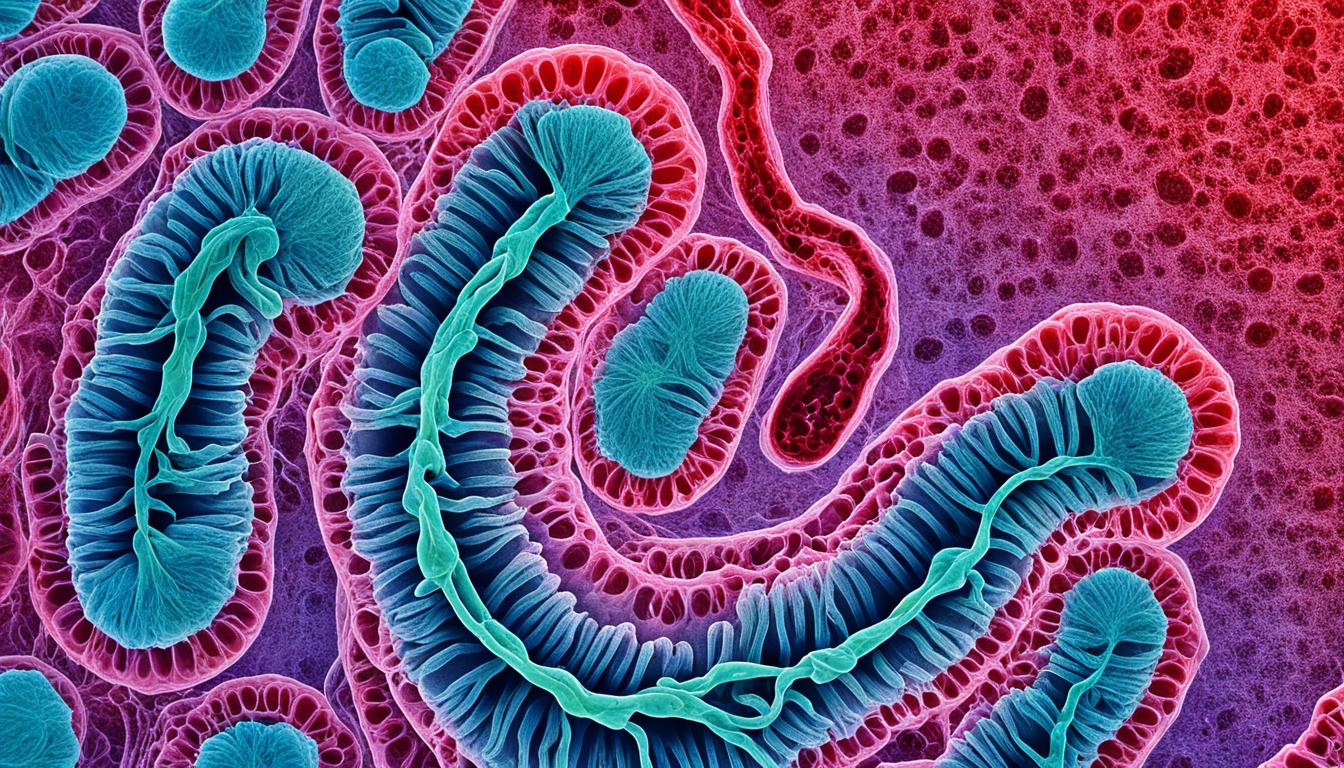Dermatitis cercarial, or swimmer’s itch, is a skin issue. It’s caused by parasites in freshwater. These parasites are called Schistosoma. When they get on your skin, you might feel itchy and see redness and small blisters.
Doctors diagnose this by looking at your symptoms and if you’ve been in bad water. Usually, you can use things like antihistamines or corticosteroids to feel better. But, if it’s really bad, stem cell treatment could help.
Key Takeaways:
- Schistosoma parasites in contaminated freshwater cause dermatitis cercarial
- Symptoms include itching, redness, swelling, and small blisters on the affected area
- Diagnosis is based on symptoms and exposure history
- Treatment options include antihistamines, corticosteroids, and potentially stem cell therapy
- Prevention and awareness are important to reduce the incidence of this waterborne disease
Causes and Transmission of Dermatitis Cercarial
Dermatitis cercarial is caused by parasitic flatworms known as Schistosoma parasites. They live in dirty water. The life cycle of these parasites involves freshwater snails and migratory birds.
In this cycle, the parasites produce larvae, or cercariae. These tiny larvae swim in water. If they touch a person’s skin, they cause an allergic rash. People get this rash by swimming or working in water where these larvae are found.
Even though the cercariae can enter human skin, they cannot fully grow inside people.
Symptoms and Diagnosis of Dermatitis Cercarial
Dermatitis cercarial, also named swimmer’s itch or cercarial dermatitis, comes with specific symptoms. The most common sign is intense itching. This itching can be so bad that it disrupts daily life.
Other symptoms include swelling and redness of the skin. They show up soon after being in contaminated water. Itching, swelling, and redness are unique to dermatitis cercarial. These signs can help tell it apart from other skin issues.
To diagnose dermatitis cercarial, doctors look at symptoms and exposure to water. They ask about recent time spent in possibly infected water. This type of in-depth questioning is key for a correct diagnosis.
In some cases, tests like skin biopsies or blood tests may be needed. These tests check for parasites causing the disease. But usually, diagnosis comes from the symptoms and the patient’s story.
Detecting this disease early and accurately is vital. It allows doctors to start the right treatments quickly. This can help ease symptoms and prevent possible problems.
Symptoms and Diagnosis of Dermatitis Cercarial
| Symptoms | Diagnosis |
|---|---|
| *Severe itching | *Evaluation of symptoms |
| *Oedema (swelling) | *Thorough exposure history |
| *Erythema (redness) | *Skin biopsy or serological tests (if needed) |
Spotting dermatitis cercarial early and doing a full exposure check can make diagnosis more accurate. This leads to better and faster treatment, which improves the patient’s life.
Conclusion
Dermatitis cercarial, known as swimmer’s itch, is a common skin problem. It happens when your skin reacts to a type of parasite. This issue can lead to a bit of itching or even a lot of discomfort. It often shows up right after you’ve been in water that’s not clean.
Doctors figure out if you have it by looking at what you’ve done lately. Have you been in water that might have parasites?
Treating this skin issue can be done in a few ways. Things like taking antihistamines or using skin creams can help. But if it’s really bad, there’s another treatment that might work. It’s called stem cell therapy. Still, we need more studies to know for sure if it helps.
To keep this problem from happening, it’s important to know how it starts and how to stay safe. Teaching people about the dangers of dirty water is key. Tips like not swimming in risky areas and wearing the right clothes can help a lot. These actions can really lower the chances of getting swimmer’s itch or a freshwater rash.

